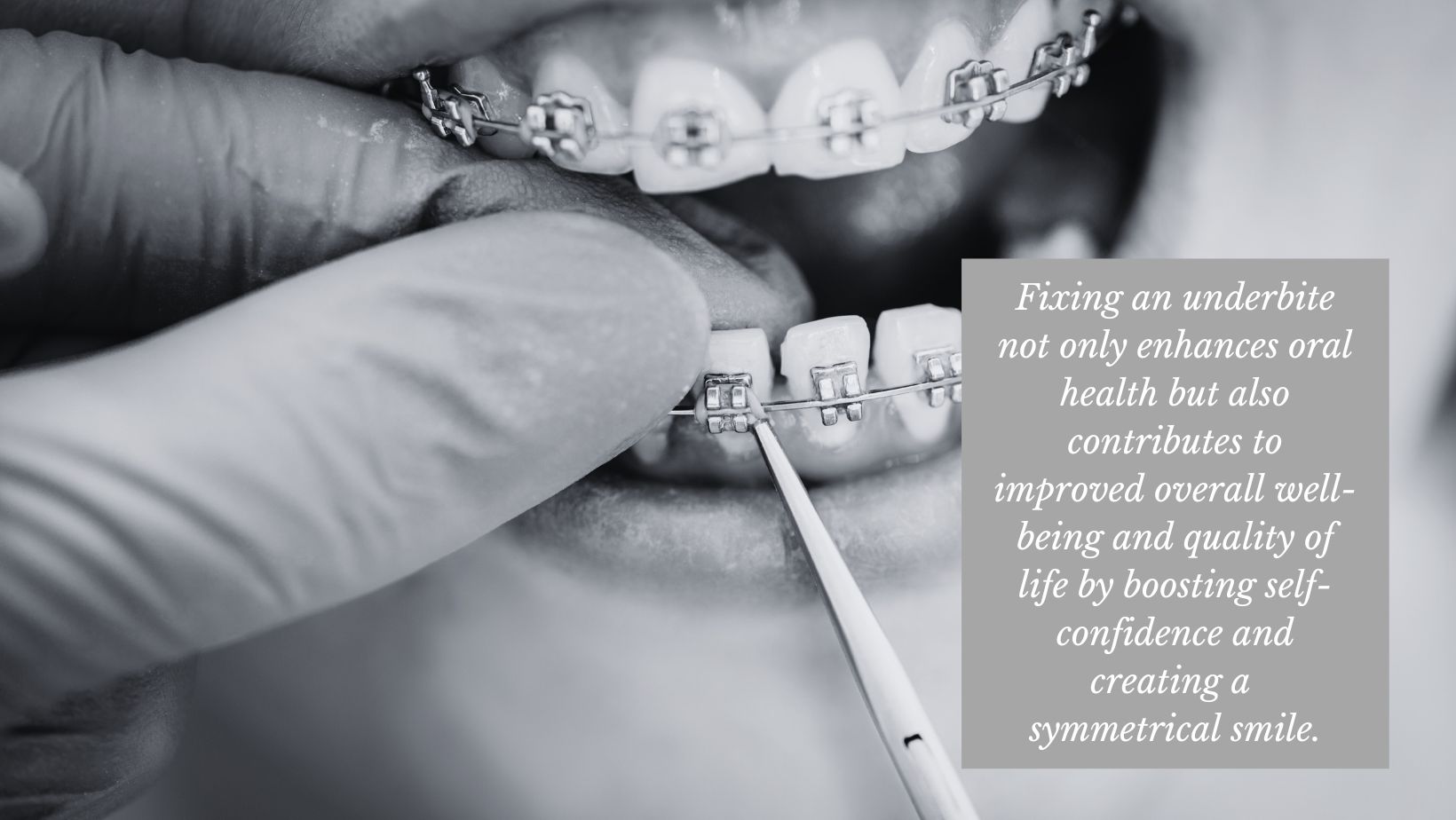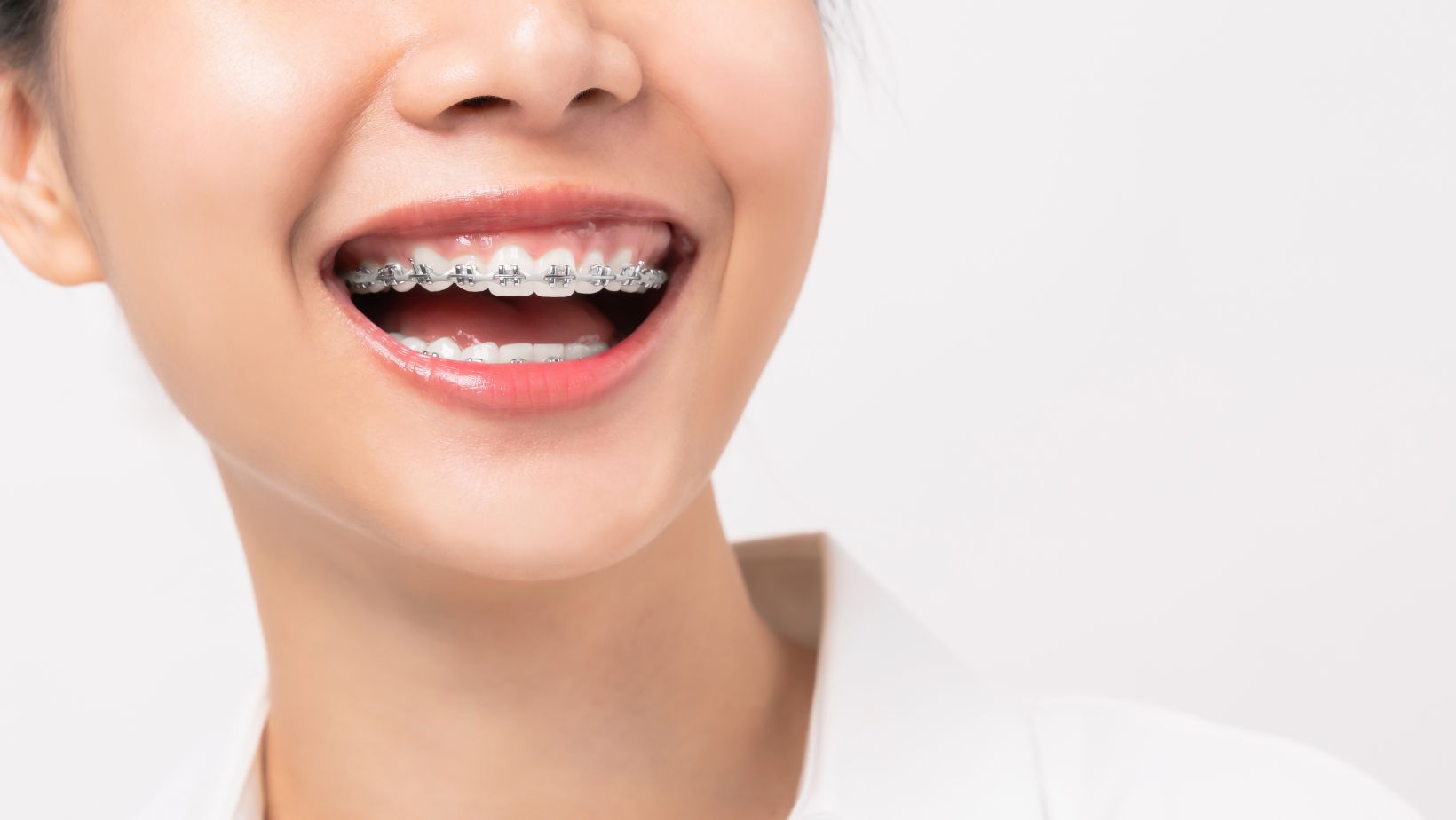Orthodontic treatments, including braces, have been transforming smiles and improving oral health for decades. Among the many dental issues that braces fix, one common concern is an underbite. An underbite occurs when the lower teeth andjaw stick out further forward than the upper teeth, creating an imbalance in the bite. Braces can correct an underbite, here is the process involved, and what patients can expect when fixing an underbite.
What is an Underbite?
Before discussing the role of braces, it’s essential to understand what an underbite is and how it develops. An underbite is one type of malocclusion or misaligned bite. Others include an overbite or crossbite.
An underbite can result from various factors, including genetics, jaw misalignment, and prolonged thumb-sucking or pacifier use in childhood. Having teeth not meet properly is more than just a cosmetic issue; underbites can lead to functional problems such as difficulty in chewing, speech impediments, and joint problems that cause jaw pain.
Why is Fixing an Underbite Important?
Fixing an underbite is crucial for several reasons. First and foremost, correcting an underbite ensures the upper and lower teeth align correctly. This alignment reduces the risk of dental issues such as tooth wear, chipping, and damage. Speech improvement is another important aspect, as underbites can lead to speech difficulties that can interfere with effective communication. It can also alleviate jaw pain and discomfort.
Fixing an underbite not only enhances oral health but also contributes to improved overall well-being and quality of life by boosting self-confidence and creating a symmetrical smile.
Can Braces Fix an Underbite?
Braces definitely play a crucial role in correcting underbites and can be more effective than other methods such as Invisalign. However, the approach and timeline can vary based on the severity of the underbite and the patient’s age. Here’s how braces can help:
1. Traditional Braces:
For less severe underbites, traditional braces can be highly effective. Brackets and wires are used to apply consistent pressure on the teeth, gradually shifting them into the correct position.
Orthodontists may use additional tools like elastics or springs to specifically target the underbite, encouraging proper alignment between the top and bottom teeth.
2. Headgear and Braces:
In some cases, especially when addressing underbites in children, orthodontists may recommend headgear. Specifically, headgear used for underbite correction is often referred to as “reverse-pull” or “facemask” headgear.
Headgear is a dental appliance designed to guide the upper jaw forward and promote forward growth while also gently restraining the growth of the lower jaw. This helps correct an underbite by aligning the upper and lower teeth properly.

3. Functional Appliances:
Functional appliances are orthodontic devices designed to correct underbites and other malocclusions by influencing the growth and positioning of the jaw and teeth. These appliances are typically used in children and teenagers while their jaws are still growing.
Here are some common functional appliances used to fix an underbite:
- Bite Plate: A bite plate is a removable appliance that covers the upper or lower teeth and is used to reposition the jaw by encouraging proper alignment. It can be adjusted over time to guide the bite into the desired position.
- Twin Block Appliance: This removable appliance consists of two separate pieces, one for the upper teeth and one for the lower teeth. The patient can only close their teeth when the jaws are in the correct position. Over time, this encourages the upper and lower jaw to adapt naturally, eventually correcting the underbite.
- Herbst Appliance: The Herbst appliance is a fixed orthodontic device that is attached to the upper and lower molars. It holds the lower jaw in a forward position, allowing the upper and lower teeth to fit together correctly.
4. Surgery and Braces:
The majority of patients do not need to resort to surgery, but extreme cases of severe underbites may require a combination of orthodontic treatment and corrective jaw surgery. Braces are used to align the teeth, while surgery can reposition the jaw to achieve the desired bite.
How Braces Fix an Underbite: The Orthodontic Journey
Undergoing orthodontic treatment to correct an underbite is a process that requires patience and commitment. Correcting an underbite with braces can take anywhere from one to three years. Here is what a patient can expect from start to finish:
Consultation and Evaluation: Fixing an underbite begins with an initial consultation with an orthodontist. They will assess the underbite’s severity, discuss treatment options, and create a personalized plan best suited for the patient’s underbite.
Braces Installation: Once the treatment plan is in place, braces will be installed on the teeth. Patients will need to attend regular appointments for adjustments and to monitor progress throughout treatment.
Treatment Duration: The length of treatment can vary but typically ranges from one to three years, depending on the complexity of the underbite.
Oral Hygiene: Maintaining excellent oral hygiene is crucial during treatment to prevent issues like cavities or gum disease. Special care is needed to clean around the braces. An interdental brush or floss threader can help the patient clean between wires and around brackets.
Retainers: After braces are removed, teeth have a natural tendency to shift back to their original positions. Retainers help prevent regression and maintain the corrected bite by holding the teeth in their newly aligned positions. They provide stability to the newly aligned bite and allow the surrounding bone and tissues to adapt to the changes.
Braces Can Fix an Underbite
Braces can correct underbites, providing not only a more balanced and aesthetically pleasing smile but also improved oral health and functionality. If you or your child is dealing with an underbite, seek a consultation with a Dental Health Society professional right away. Orthodontic treatment for an underbite requires time and patience, but the results are well worth the effort.


